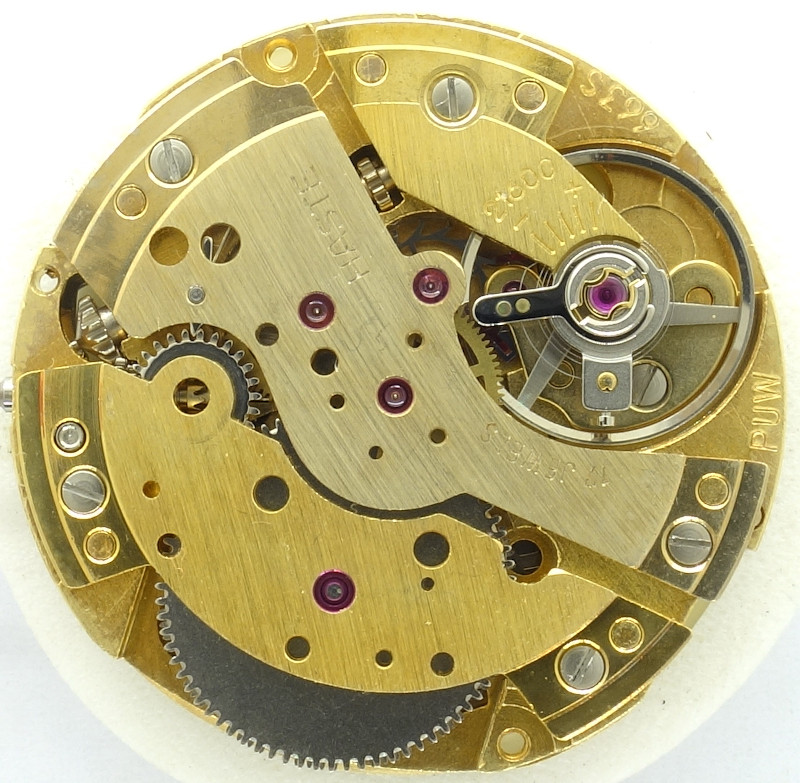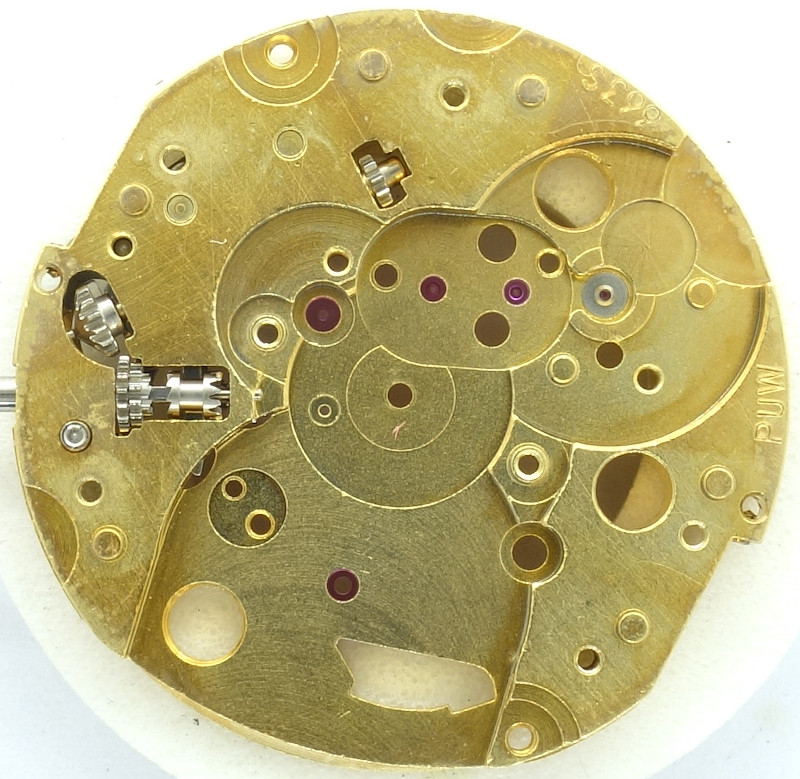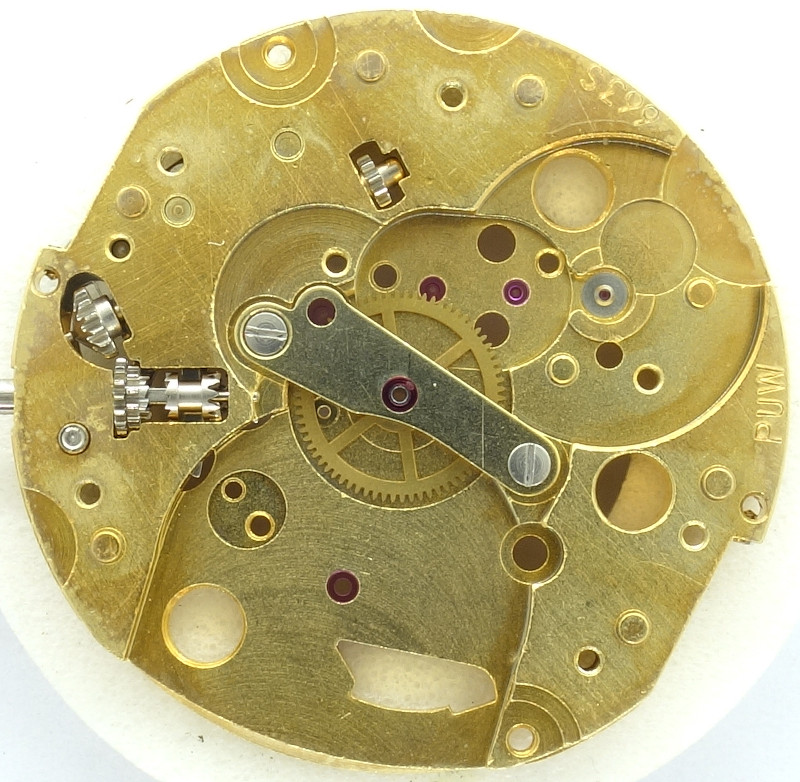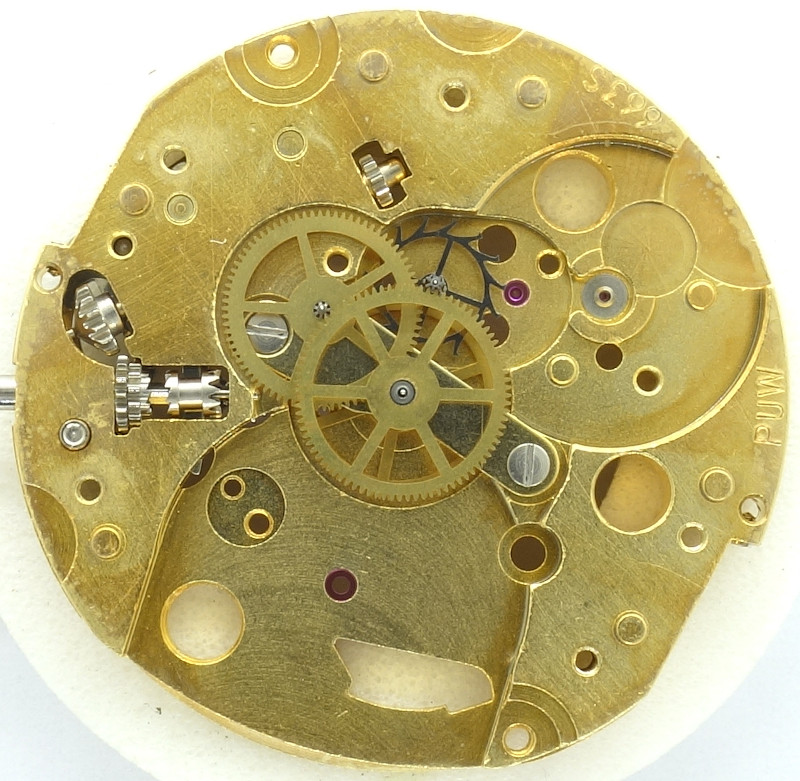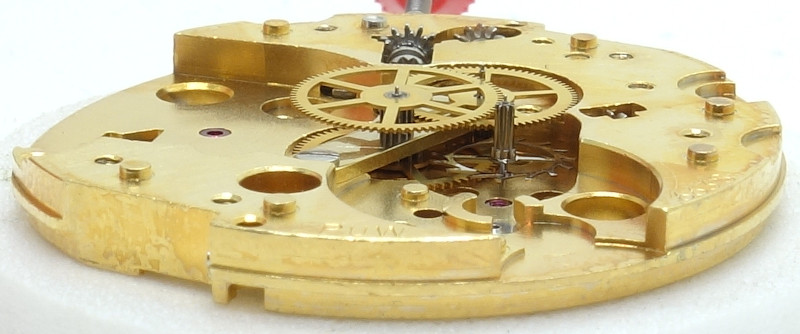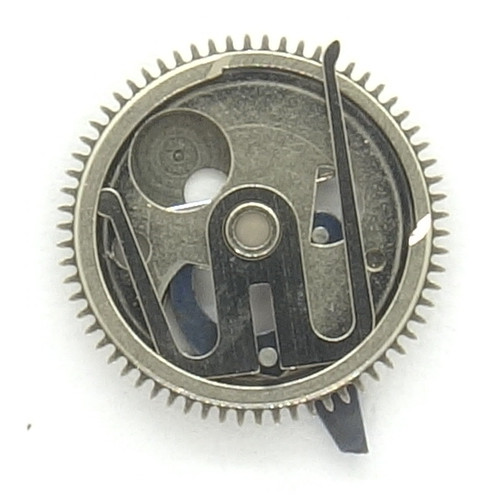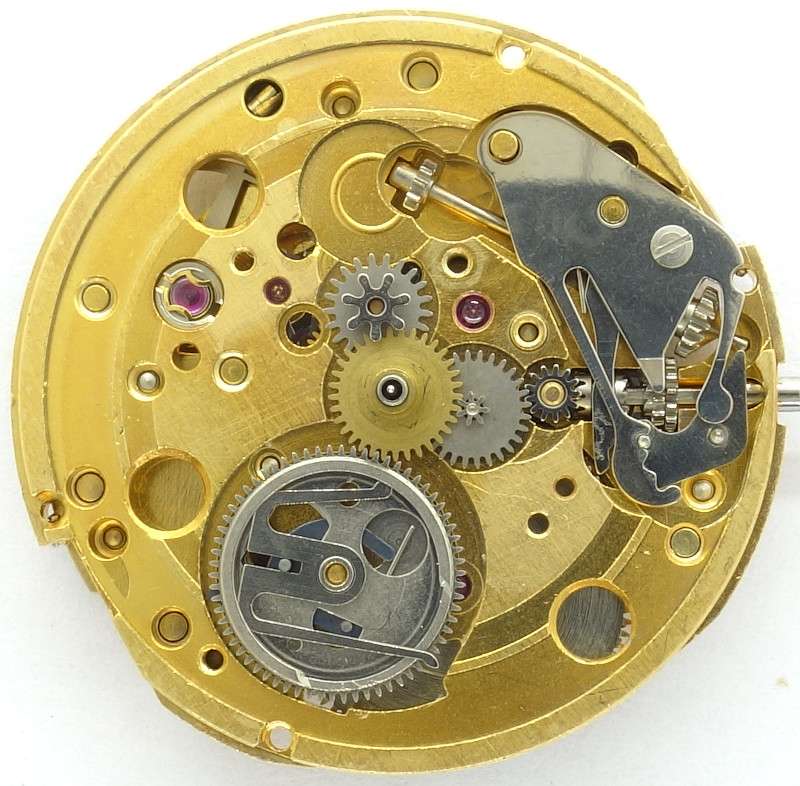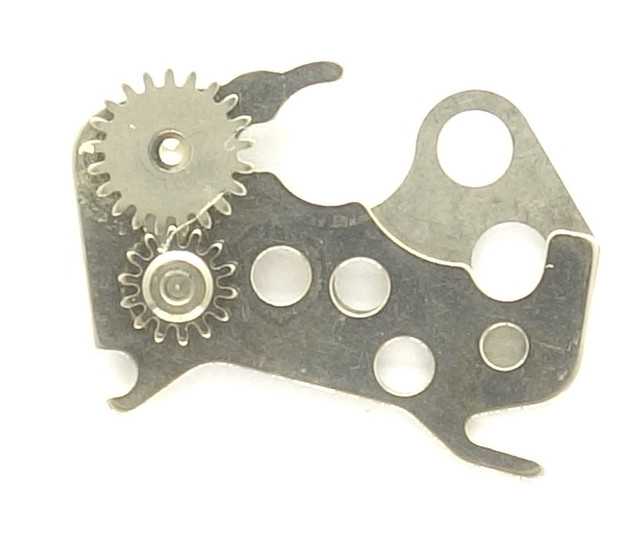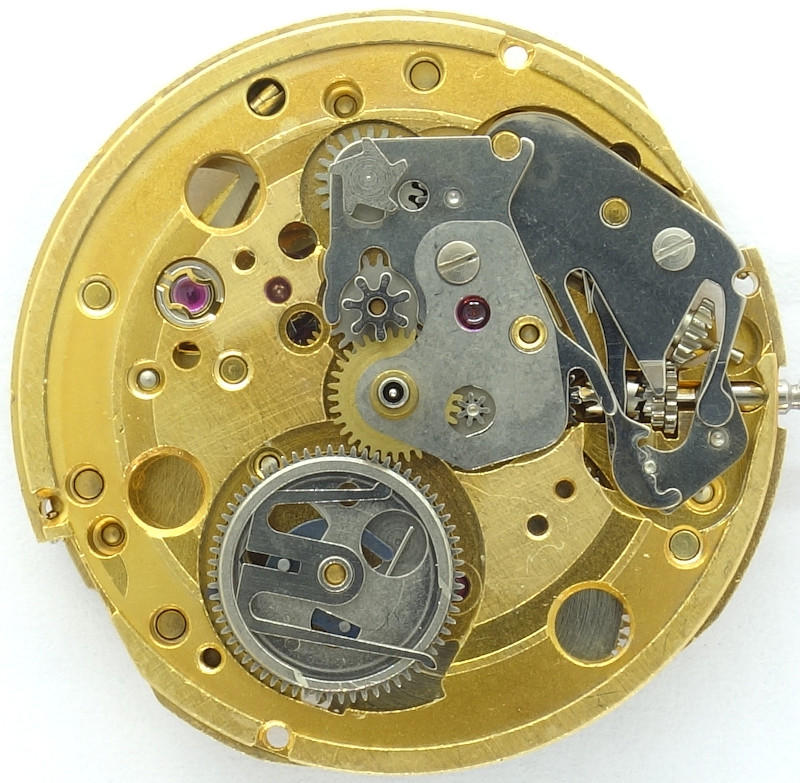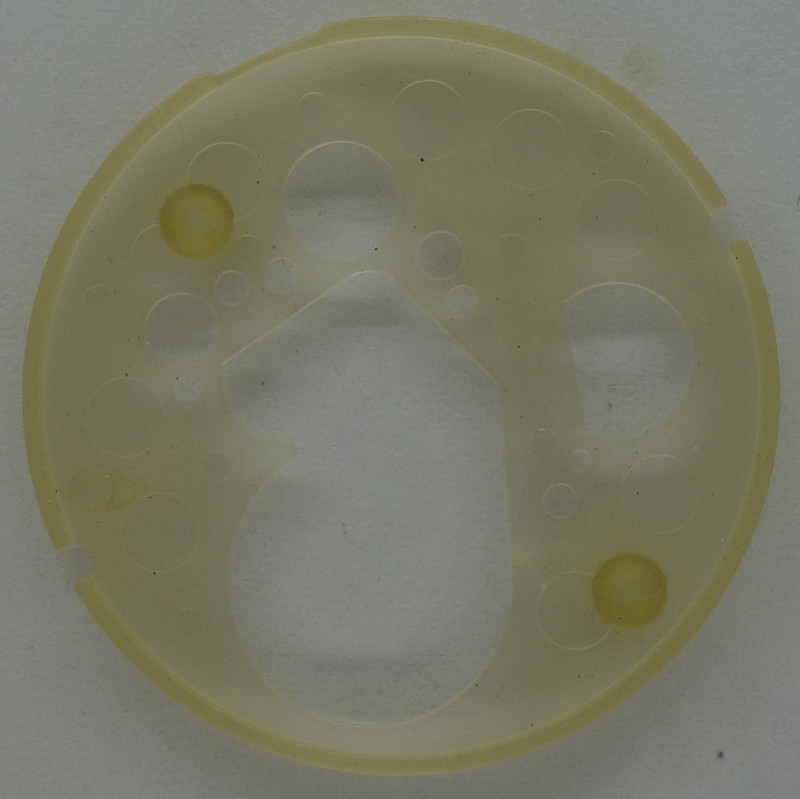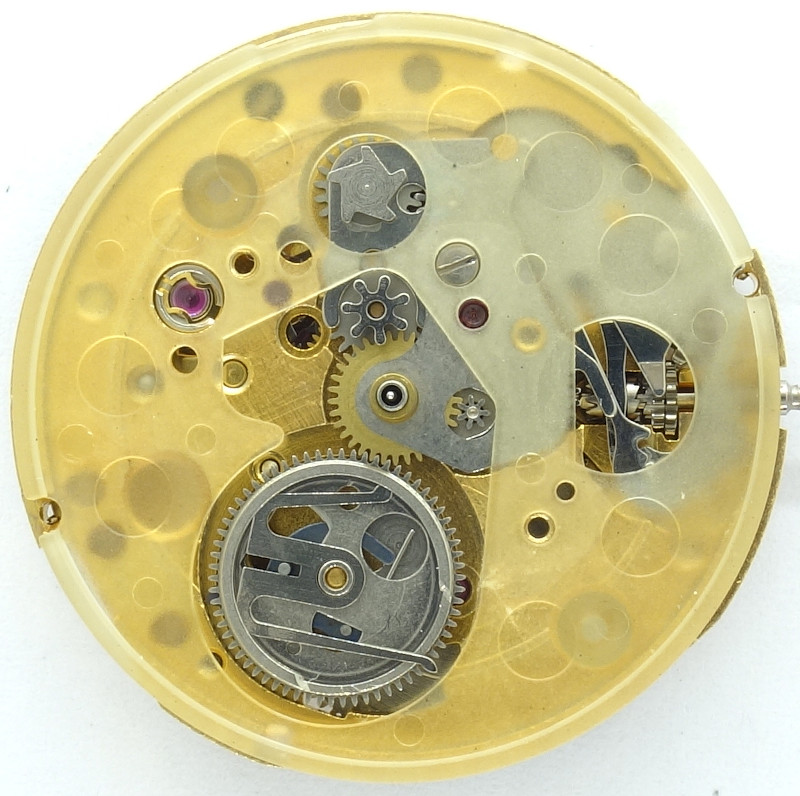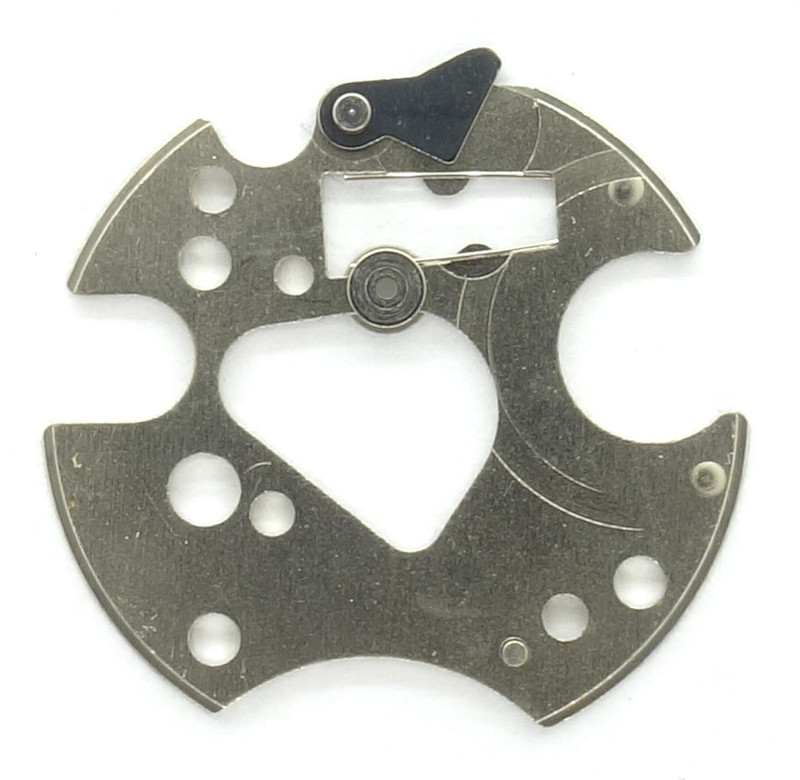Description
1977 the german PUW (Pforzheimer Uhrenrohwerke) launched their final series of mechanical movements, the series 660/1660. Although they were modern constructions and offered all possible standard features, they had no chance to compete with the upcoming quarz movements, and so in 1979 the PUW stopped the production of mechanical movements.
The caliber PUW 663S offers the highest number of features of the windup variants and offeres besides the center seconds indication also day-date display with a pretty unusually constructed quickset mechanism.
The base plate shows, that of course all important bearings contain Rubies, only the minute wheel is only ruby-beared on the dia side.
The date setting wheel arbour, which engages in the middle position of the crown, can be seen, too.
As all predecessors, the PUW 663S too, uses the classical gear train, with directly driven center minute wheel, which is beared under its own bridge. This bridge carries a bearing ruby, so that the minute wheel is ruby-beared on at least one side.
It’s typical for the final PUW caliber series, that the crown wheel is located on the innerside of the barrel bridge, and that it is riveted. This saves some space and was certainly cheaper to produce, but in case of an error, you most likely have to replace the whole bridge.
As said above, we have the classical gear train here: The large mainspring barrel drives the center minute wheel, followed by third wheel, center seconds wheel and steel escape wheel.
As usual, a swiss pallet lever escapement is used. A three-leg anular balance acts as regulating device, which beats with 21600 A/h. For the late 1970ies, this beating frequency is rather low, the ETA movements of the same eta already beat with 28800 A/h and offer, at least theoretically, better precision rates. In practical use, the differences are minimal, as the test on the timegrapher showed.
The Incabloc shock protection is state-of-the-art, but the adjustment of the effective hairspring length, which can be done only at the hairspring key directly, is a bit clumsy.
The ratchet is located on the inner side of the gear train bridge. Unfortunately, it is also riveted, making it difficult to replace it in case of an error.
On the yet (almost) empty dial side, you can see the moveable arbor, which connects in the middle crown position the yoke wheel with the date correcting wheel. If you want to see the date quickset mechanism in full detail, please head over to the description of the PUW 663.
The regular date advancement happens via the ratchet wheel at 7 o’clock, which is driven by the hour wheel.
It has a lever and a pin, which are preloaded in corresponding cut-outs on the plate on the dial side, and discharge immediately at midnight. The long lever engages with the weekday disc, the pin into the date ring.
The weekday disc must be advanced two steps, since it is bilingual.
On the inner side of the date correcting plate, there’s a moving gear, which goes up or down, depending on the turning direction. If shifted up, the date ring is advanced, if shifted down, it turns a second, statically mounted gear, which drives the weekday disc.
Unlike the PUW 663, the switching star of the date corrector has got five instead of three teeth.
The calendar mechanism is covered with a semitransparent plastic spacer. On it, the date wheel and the weekday disc are beared.
Since the weekday disc has got its teeth on its under side, it builds a bit heigh and thus must be beared higher to be on the same level, as the date ring. This is the most important function of the plastic spacer.
The bearing of the date ring is done with a cover plate, on whose inner side, a spring-loaded lever ensures, that the date ring locks at the correct position and thus the date figures are centered in the dial cutout.
Additionally, there’s a spring loaded flat metal ring, which locks the weekday disc in its correct position.
The lower side of the weekday disc has got the required toothing. It is held in position with a snap ring on the hour pinion.
The PUW 663S has a bilingual weekday disc. The regular advancement with the switching wheel has to ensure, that it is driven two positions further. Only with the manual correction, the language can be switched, by advancing it only one instead of two positions.
Unfortunately, even this most functioncal and very precise movement could not compete with the quarz movement, which came up in the mid 1970s, and so, movements from the 660/1660 series are pretty rare and difficult to find, compared to their predecessor families.
In the lab
Timegrapher result
After an adjustement, which wasn’t even 100% perfect, but sufficient enough to show the quality of the movement, the PUW 663S shows timing results, which are absolutely at eye level with a chronometer. The biggest positional difference was 8 seconds, while on an officially certified chronometer, even ten seconds would have been allowed.| horizontal positions | |||
|---|---|---|---|
| dial up | 0 s/d | 247° | 0.0ms |
| dial down | -4 s/d | 241° | 0.0ms |
| vertical positions | |||
| crown right (12 up) | -8 s/d | 227° | 0.0ms |
| crown up (3 up) | -5 s/d | 235° | 0.1ms |
| crown left (6 up) | -7 s/d | 234° | 0.3ms |
| crown down (9 up) | -4 s/d | 229° | 0.2ms |
Technical data
| Manufacturer: | PUW |
| Caliber: | 663S |
| Caliber base: | PUW 660 |
| Size: | 11 1/2''' (measured: 25,3mm) |
| A/h: | 21600 |
| Number of jewels: | 17 |
| Escapement: | Pallet lever |
| Balance types: |
Nickel anular balance |
| Shock protection(s): |
Incabloc |
| Balance bearing / direction hairspring: | Counterclockwise |
| Moveable stud: | yes |
| Adjust mechanism: | Hairspring key |
| Construction: |
|
| Construction type: | solid construction |
| Winding mechanism: | yoke winding system |
| Setting lever spring: | 3 hole(s) |
| Features: |
|
| Production period: | 1977 - 1979 |
| Inventory number: | 20037 |
